NIL
Payton Brennan declares UCLA is ‘back on the map’ in college baseball

After an excellent season, the UCLA Bruins were able to make a run to Omaha and the College World Series. However, after dropping a pair of games on Tuesday, that run has now come to an end.
After the game, outfielder Payton Brennan reflected on the season and what UCLA had accomplished. In particular, he declared that the 2025 team managed to put the Bruins back on the map.
“All Pac-12 schools, I feel like everyone doubts the West Coast,” Payton Brennan said. “And I think it was a good showing from us. It’s kind of nice to put UCLA back on the map.”
2025 was the first season for UCLA in the Big Ten after their exit from the Pac-12. It ended up being a magical one for the program. They’d go 48-18 overall and 22-8 in Big Ten play, which was good enough to win the Big Ten in the regular season. Without losing a game in the Regional or Super Regional, they’d make their run to Omaha.
For head coach John Savage, it was his 21st season leading the UCLA program. He previously won a national championship in 2013. However, the Bruins hadn’t been back to the College World Series since then.
“I think everyone hyped us up last year,” Brennan said. “It didn’t turn out. Kind of got overlooked this year, and then we came out swinging. So, nothing we could really do more. We worked hard and just happy to be here.”
Payton Brennan had a standout season individually for UCLA. He hit .303 with a .381 OBP and a .487 slugging percentage. He also had six home runs with 10 doubles and four triples to go with 41 RBIs. He even stole 11 bases. Still, that was nothing compared to the season of his teammate, Roch Cholowsky. The Big Ten Player of the Year feels the season did more than put UCLA on the map, it proved the quality of West Coast baseball.
“The West can hang with anybody,” Cholowsky said. “I mean, we’re one of the last eight teams standing along with Arizona and Oregon State. Something that I thought was pretty cool today as we were taking BP and Coach (Mitch) Canham told us to represent the West well. I thought that was pretty special because coming from the same conference last year and really being together. The West can play with anybody. We showed that this year, Oregon State showed that, so did UA.”
Several key UCLA players, including Brennan and Cholowsky, are set to return for next season. So, now the Bruins are going to need to prove that they can live up to their potential when facing high expectations.
NIL
Jon Sumrall donating $100,000 to Tulane’s NIL fund

So much for the whole “taking out a full-page ad in the local newspaper” move. Future-former Tulane head coach Jon Sumrall and his wife Ginny have put their money where their mouths are, as on Monday they announced a $100,000 donation to the Green Wave Talent Fund.
The donation will give new Green Wave head coach Will Hall a head start on building upon Sumrall’s success.
“Tulane University and New Orleans are special to me and my family,” said Sumrall. “Ginny and I are honored to support the Green Wave Talent Fund because we believe in the vision of Tulane Athletics and want to contribute to the continued success of its student-athletes. The future is incredibly bright, and we are excited for Will Hall and his family to be part of it.”
“Coach Hall possesses a keen understanding of Tulane University and its football program, along with a passion that greatly benefits the Green Wave. As a leader, he cares deeply about helping others reach their full potential and is dedicated to equipping them to achieve that goal in every way possible. He has our family’s full support, and we wish him nothing but success as he leads Tulane Football!”
Sumrall, of course, has accepted the head coaching position at Florida, which will officially begin at the conclusion of Tulane’s College Football Playoff run. Sumrall is 20-7 with two berths in the American Championship in his two seasons atop the program, building upon the success of Willie Fritz, who went 23-4 with two berths in the American Championship, one conference title, a Cotton Bowl win and an AP No. 9 finish in his final two seasons with the program.
Tulane is one of three programs to play in four straight conference title games (Boise State and Georgia are the others), and the Sumralls’ gift helps Hall build a team that can make it five in a row.
“We are grateful to Jon and Ginny for this incredible gift,” said AD David Harris. “Their leadership and generosity will have a direct and lasting impact on our student-athletes as we continue to grow and elevate Tulane Athletics.”
Hall was Tulane’s offensive coordinator in 2019-20 and returned to New Orleans as passing game coordinator this season. He holds a career 70-50 record as a head coach, including a 25-11 run at West Alabama from 2011-13, a 31-9 mark with two Division II semifinal trips from 2014-16 at West Georgia, and a 14-30 mark over four seasons at Southern Miss.
NIL
The 8 best players in this year’s College Football Playoff
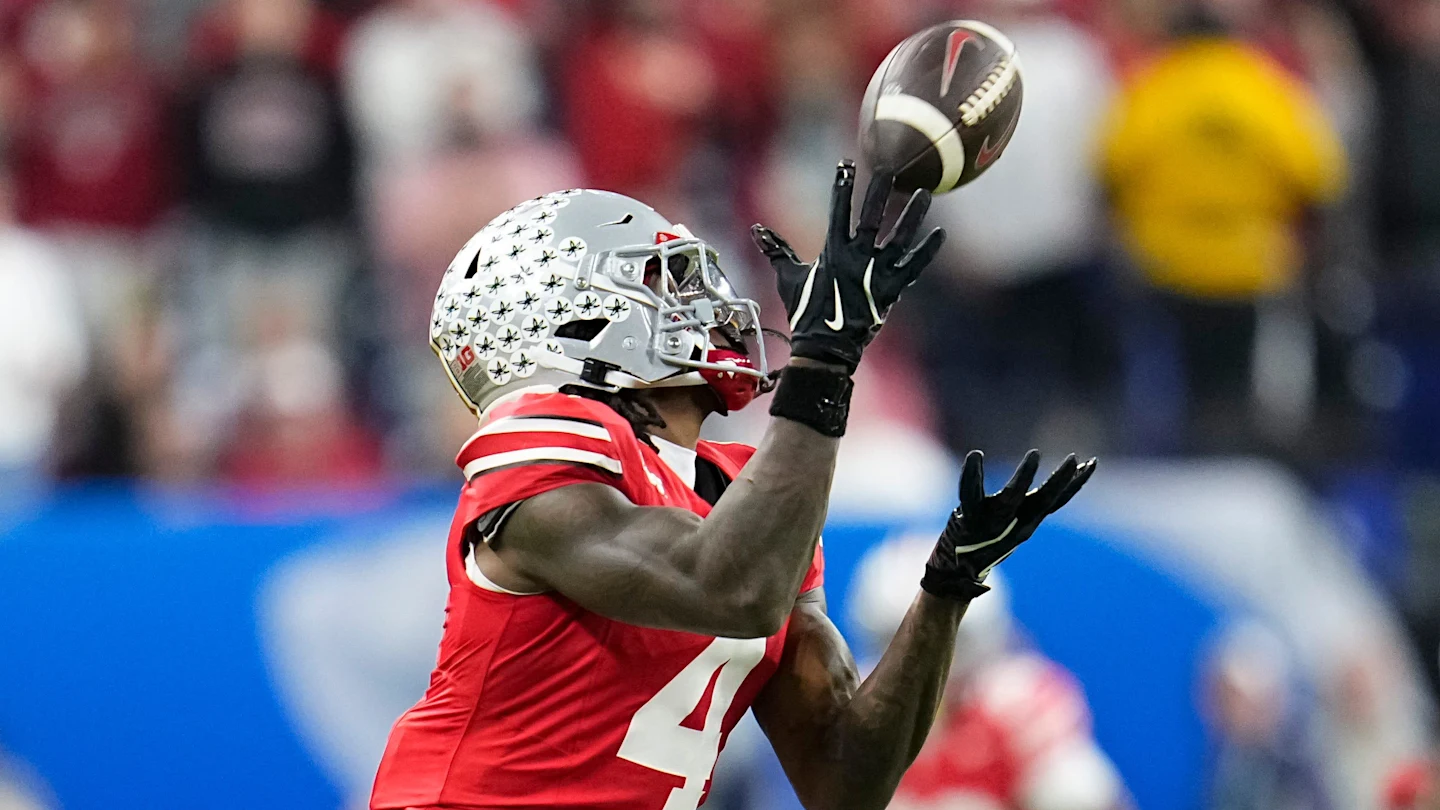
The Heisman hype is finally over, so time to move on to arguing who is actually the best player in this year’s College Football Playoff. There’s no politics, no consideration of position or age or the endless parade of hassle that can make the Heisman drag. The best news– we’ll settle it all (more or less) on the field. Here’s the eight best players in this year’s College Football Playoff.
1. Jeremiah Smith, Ohio State
Smith is the best player in college football as a true sophomore. He caught 80 passes for 1,086 yards and 11 touchdowns this season for Ohio State. Smith put up five different 100 yard receiving games and was by far the prime mover and shaker at the most dangerous big-play passing attack in the nation. Sayin gets the headlines and the Heisman support, but Smith is the most untouchable talent in his entire sport.
2. Fernando Mendoza, Indiana
So he’s not the best, but he’s pretty darn close. The best argument for Mendoza is that few if any quarterbacks could make Indiana take off with the gusto that Mendoza managed all season. Mendoza has thrown for 2,980 yards and 33 touchdowns while running for 240 yards and six more scores. He’s impressively consistent, is a natural leader, and has done things at Indiana that were previously unimaginable. He deserved the Heisman… but he’s not the best player in the CFP.
3. Jacob Rodriguez, Texas Tech LB
The best defensive player in the nation, there’s an argument to be made that Rodriguez is the best overall. He’s already racked up 117 tackles, 11 tackles for loss, four interceptions, and a pair of rushing touchdowns just for fun. He is the engine that makes the ridiculously good Texas Tech defense roll. The only reason he’s not higher than he is would be that Tech’s defense would still be formidable without him. But it probably wouldn’t be in the CFP.
4. Julian Sayin, Ohio State
Yes, it feels like anybody could succeed at QB for Ohio State. But it only feels that way because of how smooth and effortless Sayin makes his job seem. He’s completing 78.4% of his passes on the year for 3,323 yards and 31 touchdowns. If that sounds like video game numbers, it’s because Sayin makes Ohio State’s excellent feel inevitable.
5. Trinidad Chambliss, Ole Miss
No Gunner Stockton or Ty Simpson make an appearance here, but Diego Pavia aside, Chambliss was the class of the SEC. Despite starting the season as a backup, he has 3,016 passing yards and another 470 yards on the ground, with a combined 24 touchdowns. He started his career as a starter with three 300+ yard passing games and has replicated that feat in his last three games heading into the CFP.
6. Louis Moore, Indiana
Moore is one of the great weird stories of the season. A JUCO guy who came to Indiana and played well in the struggilng pre-Cignetti days, he transferred to Ole Miss for 2024. He then returned to Indiana for 2025, sued the NCAA to gain eligibility, and played like a maniac. Moore has 74 tackles and six interceptions. He’s 24 years old, he’s back at a school he originally left, and he’s a magnet for the ball at cornerback.
7. Francis Mauigoa, Miami
Offensive linemen tend to get more blame than credit. They don’t put up massive totals of stats and they get noticed mostly when they pick up a holding penalty or a false start. But Mauigoa is the real deal. He’s helped keep Carson Beck clean, with Miami allowing just 11 total sacks all season. Mauigoa was already great. He almost never gets beat in the trenches and probably is the biggest reason that Miami is even in the CFP.
8. Cashius Howell, Texas A&M
The former Bowling Green edge rusher was an absolute terror to opposing linemen. In the 2025 season, Howell has racked up 14 tackles for loss, including 11.5 sacks. He didn’t just feast off easy opponents– 8.5 of those sacks came in SEC play. Howell’s athleticism allows A&M to play aggressively and freely on defense, with no real fear of mistakes. He’s a game-changer.
NIL
Way-too-early favorites for college football’s top award

The 2025 Heisman Trophy ceremony wrapped up at the Jazz at Lincoln Center’s Appel Room in New York City on Saturday night.
Indiana quarterback Fernando Mendoza was selected as the 91st recipient of the Heisman Trophy. Mendoza received the award over Vanderbilt quarterback Diego Pavia, Notre Dame running back Jeremiyah Love and Ohio State quarterback Julian Sayin.
With the 2025 Heisman Trophy race in the rearview mirror, the next question about the award is who can win it in 2026. There are many star players from the 2025 season who could find themselves in the mix next season.
Below is a look at the top five players who are most likely to win the award in 2026.
No. 5- QB Trinidad Chambliss, Ole Miss

Year: Senior
2025 stats: 3,016 passing yards, 18 pass touchdowns, three interceptions, 470 rush yards, six rush touchdowns
If Diego Pavia can successfully sue his way to another season of eligibility for his 2025 Heisman campaign, Trinidad Chambliss should be able to do the same for 2026.
Chambliss’ career at Ole Miss began with him being thrust into action in the third game of the season with the injury to Austin Simmons. The adaptability Chambliss demonstrated midseason will be critical once again as offensive controls shift from Lane Kiffin to John David Baker.
No. 4- QB Marcel Reed, Texas A&M
Year: Redshirt junior
2025 stats: 2,932 pass yards, 25 passing touchdowns, 10 interceptions, 466 rush yards, six rush touchdowns
Marcel Reed entered 2025 as an intriguing dual-threat quarterback who needed to hone his passing skills. Fast forward to the end of the 2025 season, and Reed has increased his production in the air substantially and is primed to make another jump in 2026.
The biggest challenge for Reed in 2026 will be working with a new offensive coordinator following Collin Klein’s departure. But any capable offensive mind should be able to do good work with an athlete like Reed.
No. 3- QB Arch Manning, Texas

Year: Redshirt junior
2025 stats: 2,942 pass yards, 24 passing touchdowns, seven interceptions, 244 rush yards, eight rush touchdowns
Arch Manning’s start to the 2025 season shuts down any and all preseason Heisman conversations by the end of September. But the way he ended the 2025 season has the college football landscape giving him a second look.
A faulty offensive line should be much improved in 2026 for Manning’s protection. If he can ride off the momentum of performances against quality competition like Vanderbilt and Texas A&M into 2026, watch out.
No. 2- QB Gunner Stockton, Georgia
Year- Senior
2025 stats: 2,691 passing yards, 23 touchdowns, five interceptions, 442 rush yards, eight rush touchdowns
Gunner Stockton proved a lot of doubters wrong with his heroics for the Bulldogs in 2025. His ability to make plays with his feet is a big reason why he will be in consideration for a Heisman Trophy in 2026.
Stetson Bennett IV will always receive the most attention for winning two national titles, but Stockton may be the most complete quarterback Georgia has fielded under Kirby Smart
No. 1- WR Jeremiah Smith, Ohio State

Year: Junior
2025 stats: 80 receptions, 1,086 receiving yards, 11 receiving touchdowns, 20 rush yards, one rush touchdown
Very rarely is there a wide receiver who is capable of competing with the best quarterbacks in college football for a Heisman Trophy. Jeremiah Smith is one of those wide receivers.
The run he put together as a freshman in the 2024 College Football Playoff would have the NFL considering him as the best receiver in the 2025 draft had he been eligible. Another run like that in the 2025 College Football Playoff would firmly insert him into the 2026 Heisman conversation.
NIL
Skip Bayless says Fernando Mendoza didn’t deserve to win the Heisman Trophy
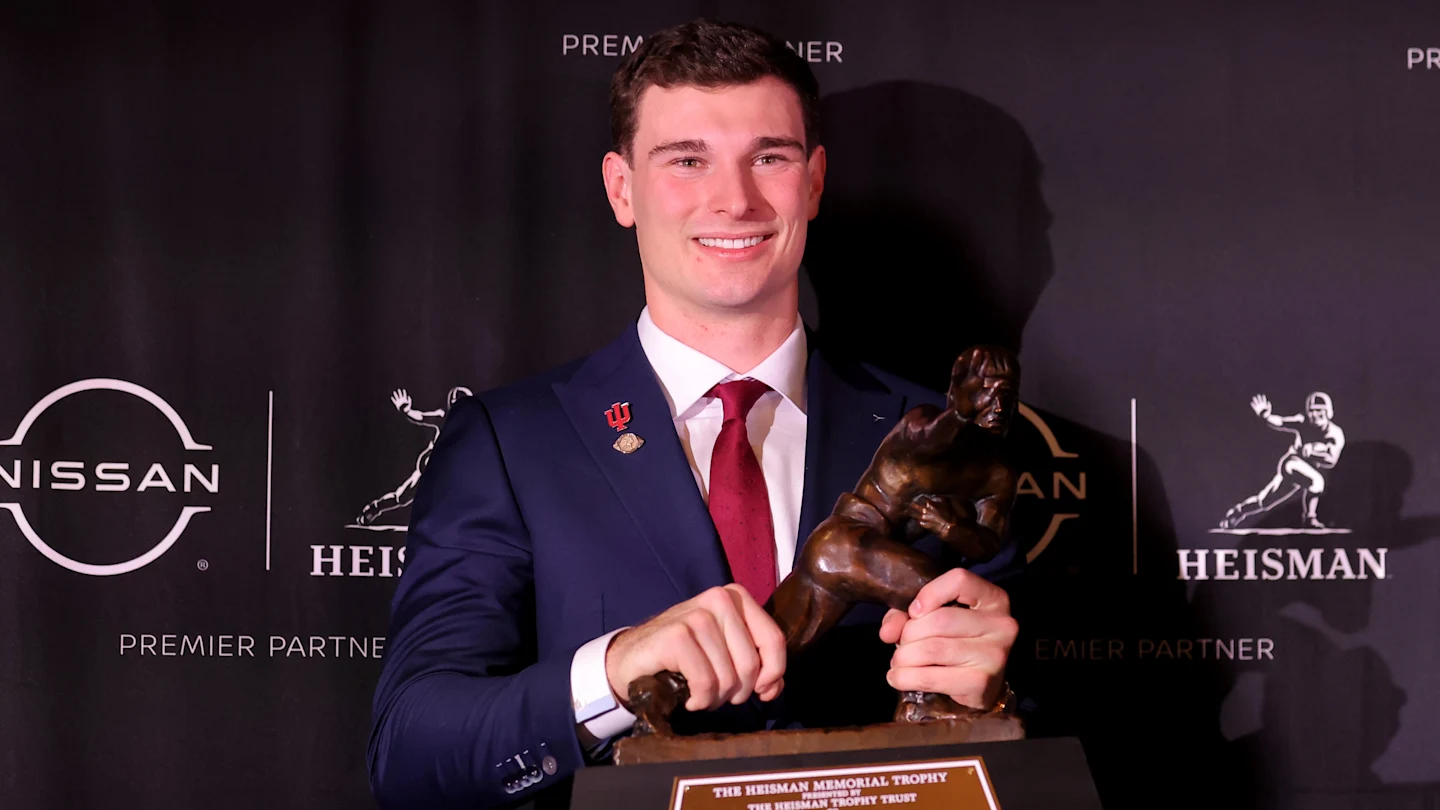
Indiana quarterback Fernando Mendoza swept to an easy Heisman Trophy victory on Saturday, but everyone wasn’t convinced of his credentials. Count long-time sports personality Skip Bayless among those who aren’t on board with the pick. Bayless, who spent years with FOX Sports and ESPN, took to social media with his take on the Heisman win.
Heisman Results
It’s worth noting that Mendoza not only easily won the award, with 643 first-place votes to 189 for the second-place finisher, Vanderbilt QB Diego Pavia. He also comfortably won the voting from all six geographic regions into which voting is divided. The fan vote for the Heisman went to neither Mendoza nor Pavia, but to Texas Tech LB Jacob Rodriguez. But Bayless’s take went a different direction.
Skip Bayless’s Take
Congrats to Fernando Mendoza… nice memorized, rehearsed speech… but Diego Pavia deserved this award for his performance on the field, even if his swagger and edge rubbed some voters and viewers the wrong way.
Skip Bayless
Pavia’s Case
Pavia put together an impressive campaign, leading Vanderilt to 10 wins for the first time in program history. He passed for 3,192 yards and 27 touchdowns while rushing for 826 yards and nine more touchdowns. A season ago, Pavia led Vanderbilt to seven wins, including an upset of then-No. 1 Alabama that spring-boarded the program to national relevance. Of course, Skip Bayless happened to graduate from Vanderbilt.
Pavia likely was hurt by a season in which he lacked a marquee win– Vandy’s best win on the season based on the current polls was over No. 25 Missouri. He also didn’t play especially well against top competition– throwing for six touchdowns and four interceptions against winning FBS teams. Of course, Vanderbilt came up just shy of the College Football Playoff.
Mendoza’s Case
Mendoza, on the other hand, led Indiana to an undefeated season and a No. 1 ranking. Mendoza has passed for 2,980 yards and 33 touchdowns and rushed for another 240 yards and six scores. He did take advantage of some big-game moments in a comeback win over Penn State and the upset of Ohio State in the Big Ten title game. Mendoza passed for 13 touchdowns and three interceptions against winning FBS teams.
Critics note that Mendoza’s big moment came against a Penn State team that fired its coach and struggled to a 6-6 season. His resume includes just two wins over currently ranked teams, although both Oregon and Ohio State are in the fop five. Mendoza threw for just two touchdowns total in those two wins (which were essentially defensive battles). But most voters clearly disagreed with Bayless’s take and were comfortable with Mendoza’s Heisman claim.

NIL
Major college football coach’s job is on the line this week, analyst claims

Being the head coach who replaces a legend is one of the toughest gigs in college football, but having to step into the shoes of the all-time winner of national championships is quite another task.
And despite being on the right side of most metrics, Kalen DeBoer could be facing more than embarrassment if Alabama doesn’t beat Oklahoma in the first-round College Football Playoff game this coming week.
Former Alabama running back Damien Harris thinks his place at the school is in jeopardy.
Is Kalen DeBoer’s job at risk?
“In my opinion, I think his job is on the line with this game, and I think there’s a lot of reasons why,” Harris said on CBS Sports.
“We’ve seen how hard it is to beat a team twice in college football, and if we look at this Alabama team, and say you showed no improvement from the first time you played Oklahoma to the second time, you weren’t able to make adjustments to flip the script of that game, and you can’t win that football game [after] luckily getting into the playoffs, that’s going to be a problem.”
Oklahoma has Alabama’s number
DeBoer is already 0-2 against Oklahoma during his two-year tenure at Alabama and now they return to Norman for a rematch against one of the best defenses in the country.
Dropping to 0-3 would put DeBoer’s place in some peril, Harris argues, especially given some of the talk around other schools reportedly being interested in him, talk that increased after Michigan came open suddenly last week.
That’s not good enough
“Listen, this isn’t the tradition, this isn’t the history that Alabama fans are used to. This isn’t the standard of excellence that’s used to being had in Tuscaloosa at the University of Alabama. People are still talking about that,” Harris said.
“I know it’s Year Two. I know we’re talking about needing to give coaches time, but when we’re talking about the University of Alabama and the legacy that needs to be set, Kalen DeBoer needs to put his own DNA on that.”
So far, he hasn’t.
“We’re not seeing that right now. We’re seeing a team that’s full of a lot of potential, has a lot of talent, a lot of resources, but they just haven’t lived up to the billing quite yet during the Kalen DeBoer tenure,” he said.
“All that being said, I think Kalen DeBoer’s job will be in a little bit of jeopardy going into next season if they don’t win this football game.”
But is any of this true?
Speaking frankly, no.
Alabama knew the stakes of finding the right person to replace Nick Saban, the man who defined college football in the 21st century, perhaps for all time, and took great care to find his successor.
DeBoer has been a proven winner, and even despite his relative struggles and losses in two years with the Crimson Tide, is still ahead of the game and has the program in the national title field.
More to it, all of the insider reporting around the coach suggests that he is more than happy being at Alabama, and is entirely focused on leading the school into the future.
And while Michigan is still a seductive opportunity given its prestige, the condition of the athletic department is a genuine concern, before and after the shocking dismissal of Sherrone Moore, who was fired for an alleged improper relationship and landed in jail on multiple charges.
Facing a bevy of negative headlines since the Jim Harbaugh era, whether it be around Covid-era recruiting violations, the Connor Stalions scandal and sign-stealing allegations, and the sudden shocking developments around Moore, even the school itself seems concerned, launching an investigation into itself and its culture.
That would not be an ideal landing spot for a coach who already has one of the top five positions in college football, is in the playoff, and likes where he is. Win or lose this week.
(Harris)
Read more from College Football HQ
NIL
Kalen DeBoer addresses future amid Michigan rumors

Kalen DeBoer isn’t heading to Michigan.
The Alabama coach decided to release a statement Sunday via Yea Alabama, the university’s NIL collective.
“I have not spoken and have no interest in speaking with anyone else about any other job,” the statement from DeBoer read. “I am fully committed to this program and look forward to continuing as the head football coach at the University of Alabama.”
DeBoer said he and his family “are very happy in Tuscaloosa” and are grateful for the support of UA president Peter Mohler, athletics director Greg Byrne, the UA System Board of Trustees “and so many others.”
“We have an incredible opportunity in front of us, so my sole focus is on Alabama football and our preparations to play Oklahoma in the College Football Playoff,” read the statement from DeBoer.
DeBoer was immediately highlighted as a top candidate to watch to coach the Wolverines once Michigan fired head coach Sherrone Moore for cause on Wednesday. DeBoer had also been mentioned as a candidate for the Penn State job before he shut down those rumors ahead of the SEC Championship Game.
DeBoer and the Crimson Tide are preparing for the College Football Playoff. No. 9 Alabama will face No. 8 Oklahoma on Friday, Dec. 19 in Norman, Oklahoma in the first round of the 12-team playoff. The winner will advance to the Rose Bowl to face No. 1 Indiana.
“We are proud to have Coach DeBoer leading our football program at The University of Alabama,” Alabama athletics director Greg Byrne posted to social media. “He is an incredible coach and does an excellent job with the development of our student-athletes, both on and off the field. Just as he is committed to this team, we are committed to him, and we look forward to taking the field Friday in the first round of the College Football Playoff.”
The game will mark the first for DeBoer as part of the 12-team playoff but his second playoff appearance overall. DeBoer led the Washington Huskies to the national championship game in 2023. Then he agreed to replace Nick Saban at Alabama ahead of the 2024 season.
In 2024, he finished 9-4 and missed the College Football Playoff. Then Alabama improved in his second season, finishing 10-2 in the regular season to reach the SEC Championship Game. The Crimson Tide lost to Georgia in Atlanta. As a result, Alabama heads into the playoff with a 10-3 record.
Heading into the playoff, DeBoer holds an 18-5 record in games against AP top 25 opponents over his time at Alabama, Washington and Fresno State.
-

 Rec Sports3 weeks ago
Rec Sports3 weeks agoFargo girl, 13, dies after collapsing during school basketball game – Grand Forks Herald
-
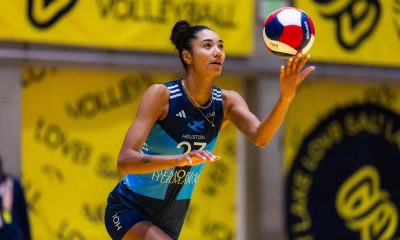
 Sports3 weeks ago
Sports3 weeks agoTwo Pro Volleyball Leagues Serve Up Plans for Minnesota Teams
-
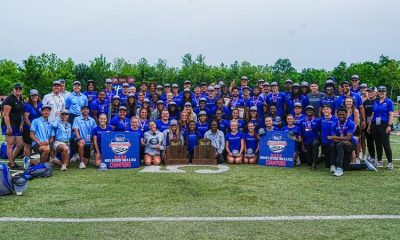
 Sports3 weeks ago
Sports3 weeks agoSycamores unveil 2026 track and field schedule
-

 Sports3 weeks ago
Sports3 weeks agoUtah State Announces 2025-26 Indoor Track & Field Schedule
-

 Motorsports3 weeks ago
Motorsports3 weeks agoRedemption Means First Pro Stock World Championship for Dallas Glenn
-

 Sports3 weeks ago
Sports3 weeks agoTexas volleyball vs Kentucky game score: Live SEC tournament updates
-

 Motorsports2 weeks ago
Motorsports2 weeks agoJo Shimoda Undergoes Back Surgery
-
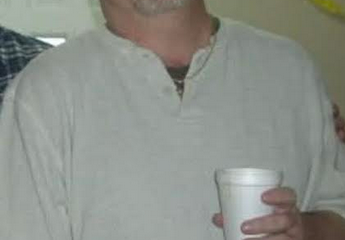
 Rec Sports2 weeks ago
Rec Sports2 weeks agoRobert “Bobby” Lewis Hardin, 56
-

 NIL2 weeks ago
NIL2 weeks agoBowl Projections: ESPN predicts 12-team College Football Playoff bracket, full bowl slate after Week 14
-

 Rec Sports2 weeks ago
Rec Sports2 weeks agoHow this startup (and a KC sports icon) turned young players into card-carrying legends overnight

























